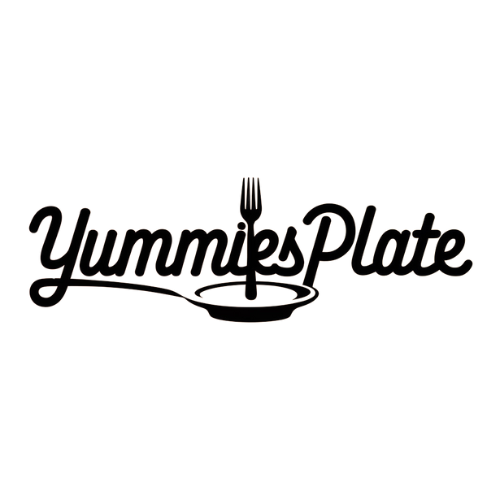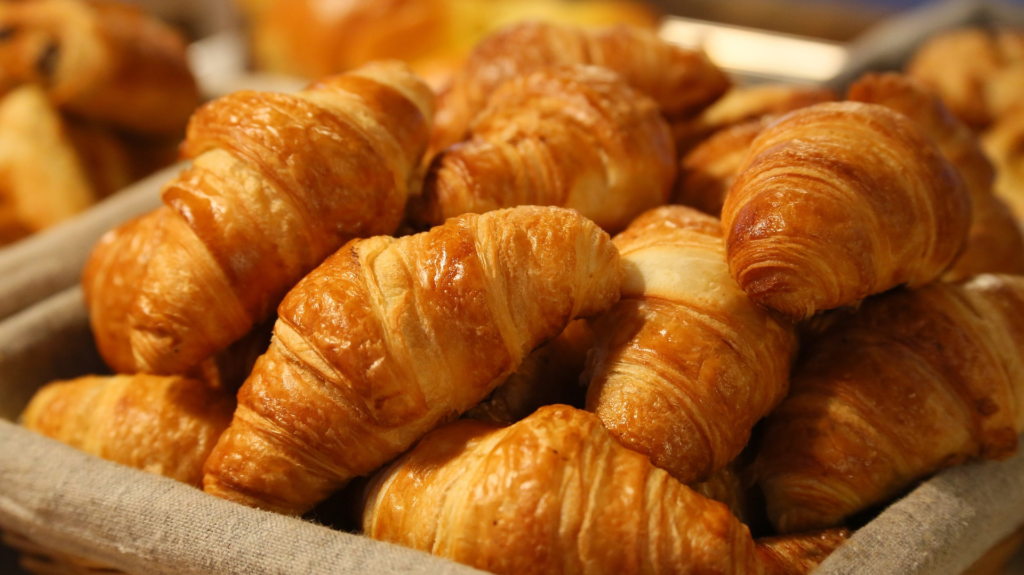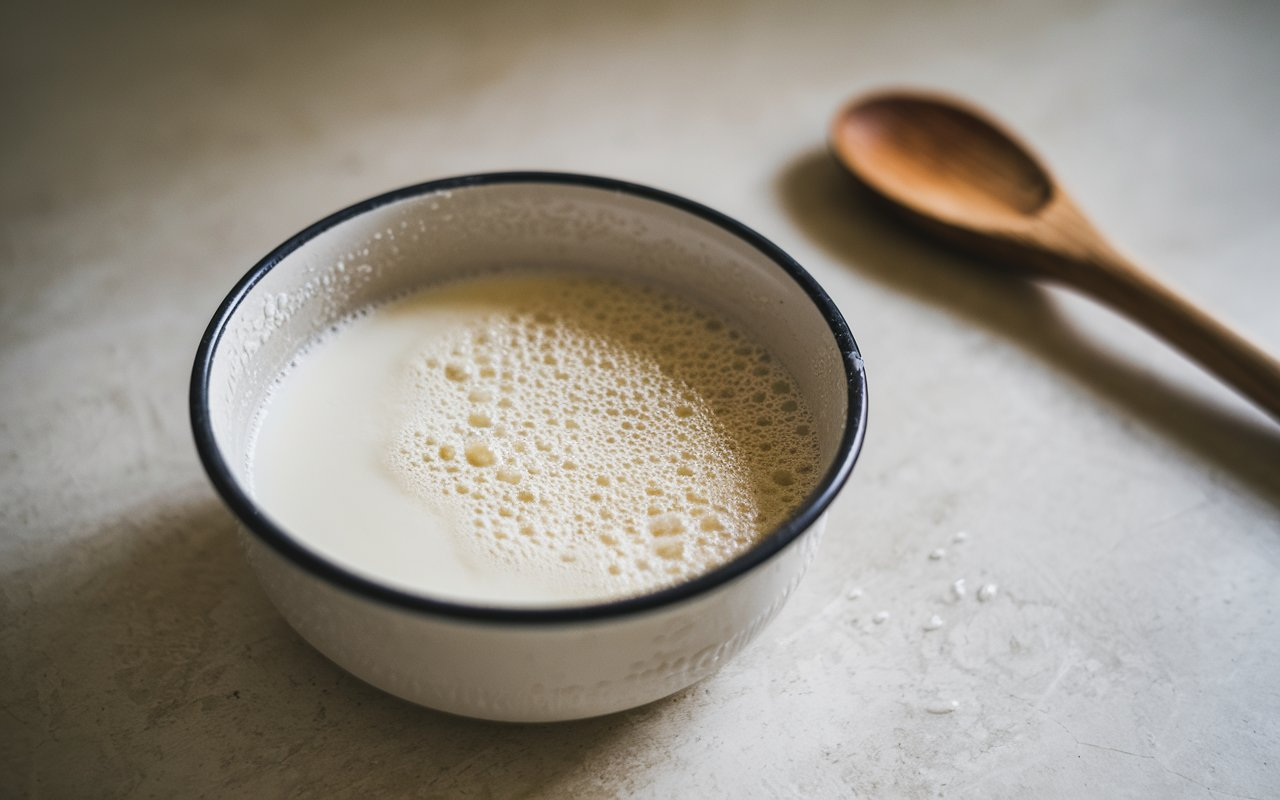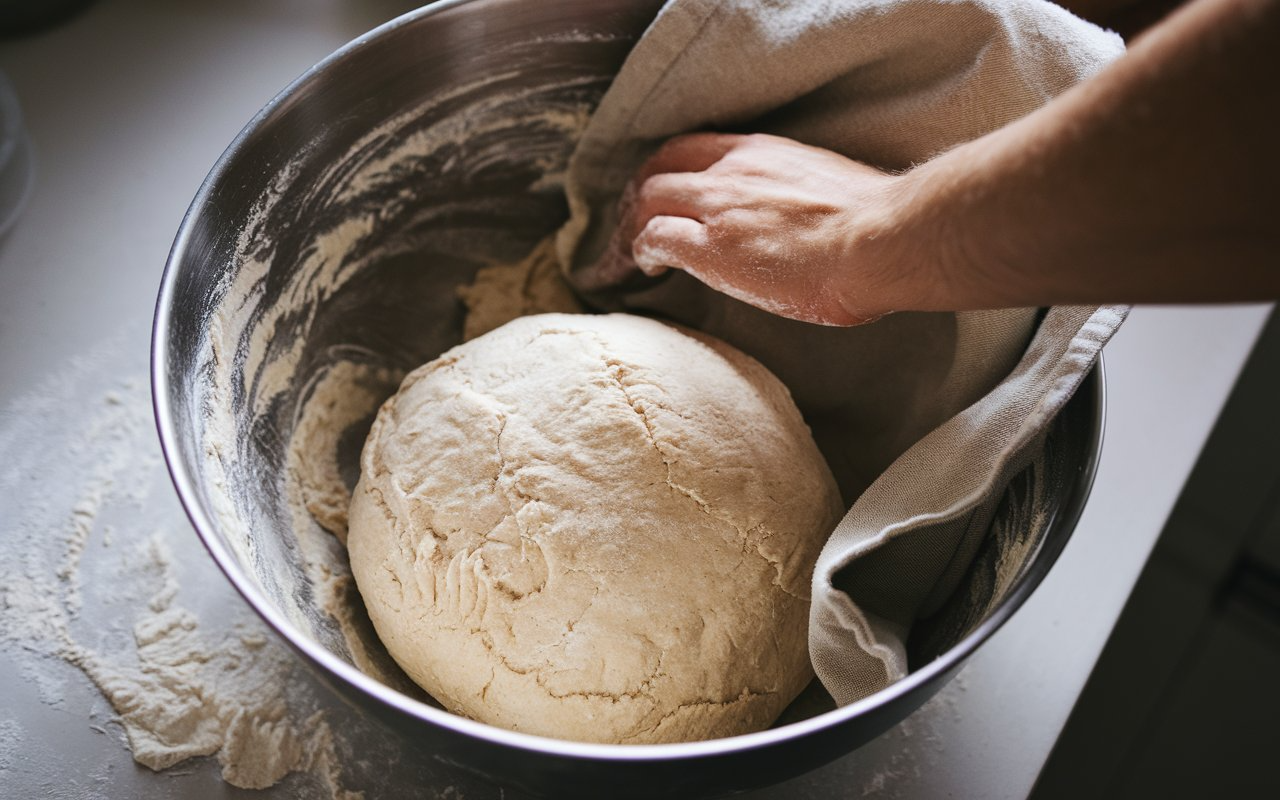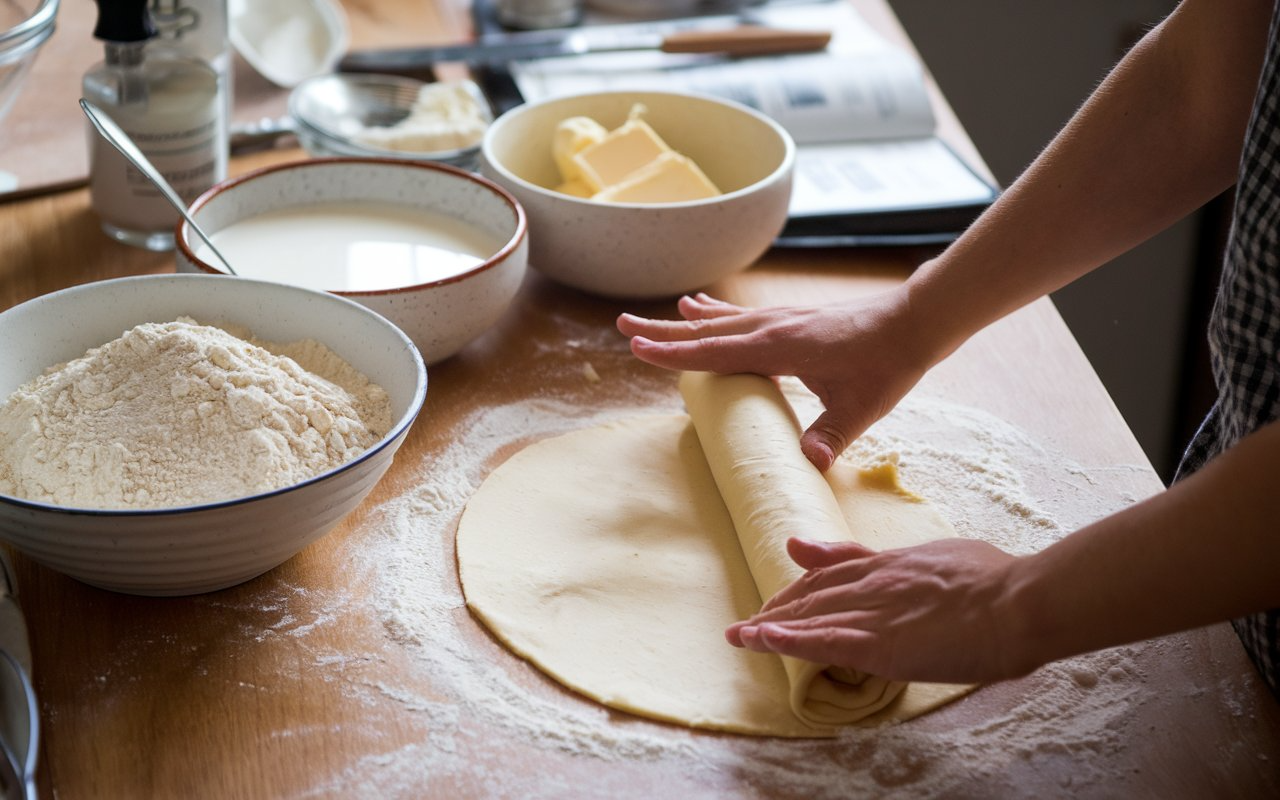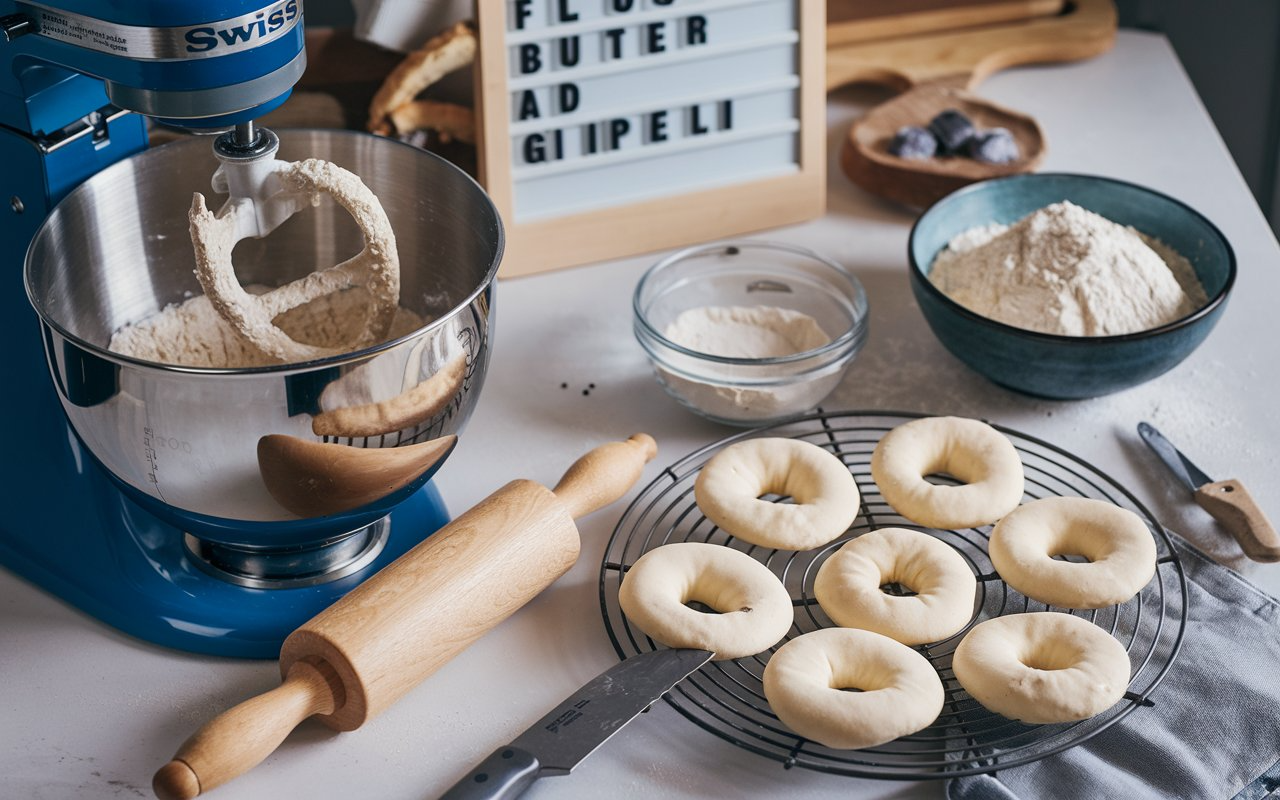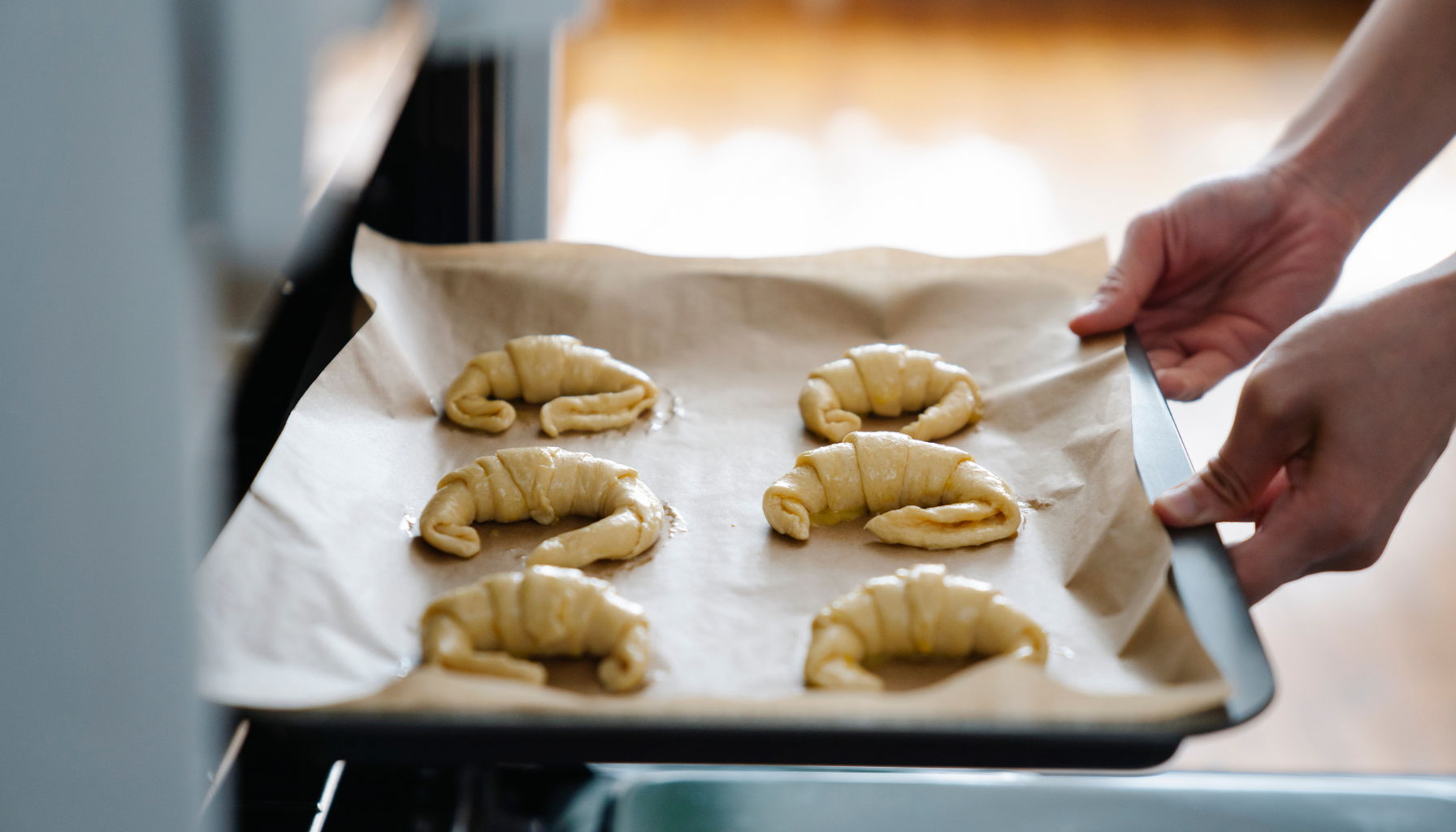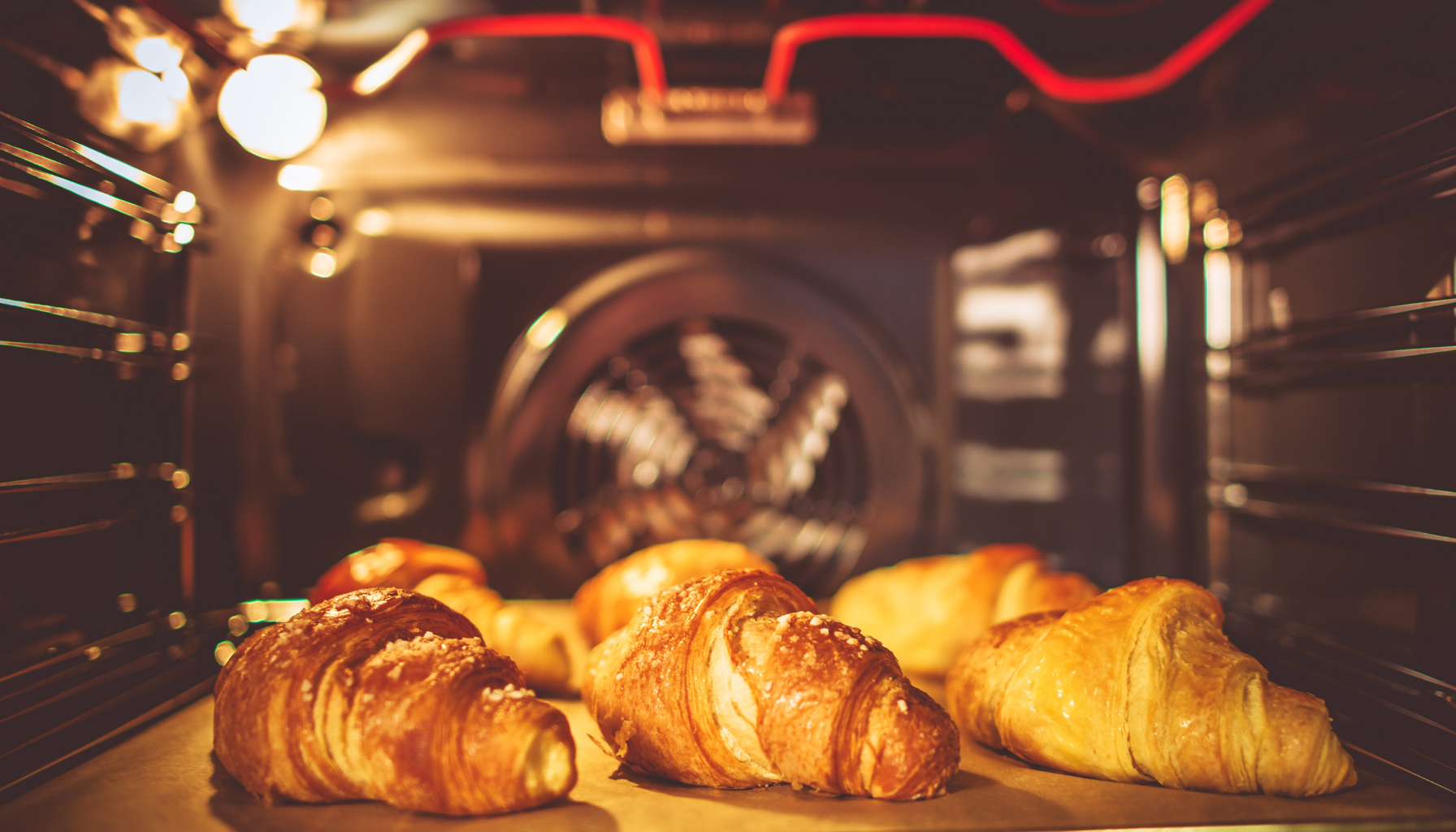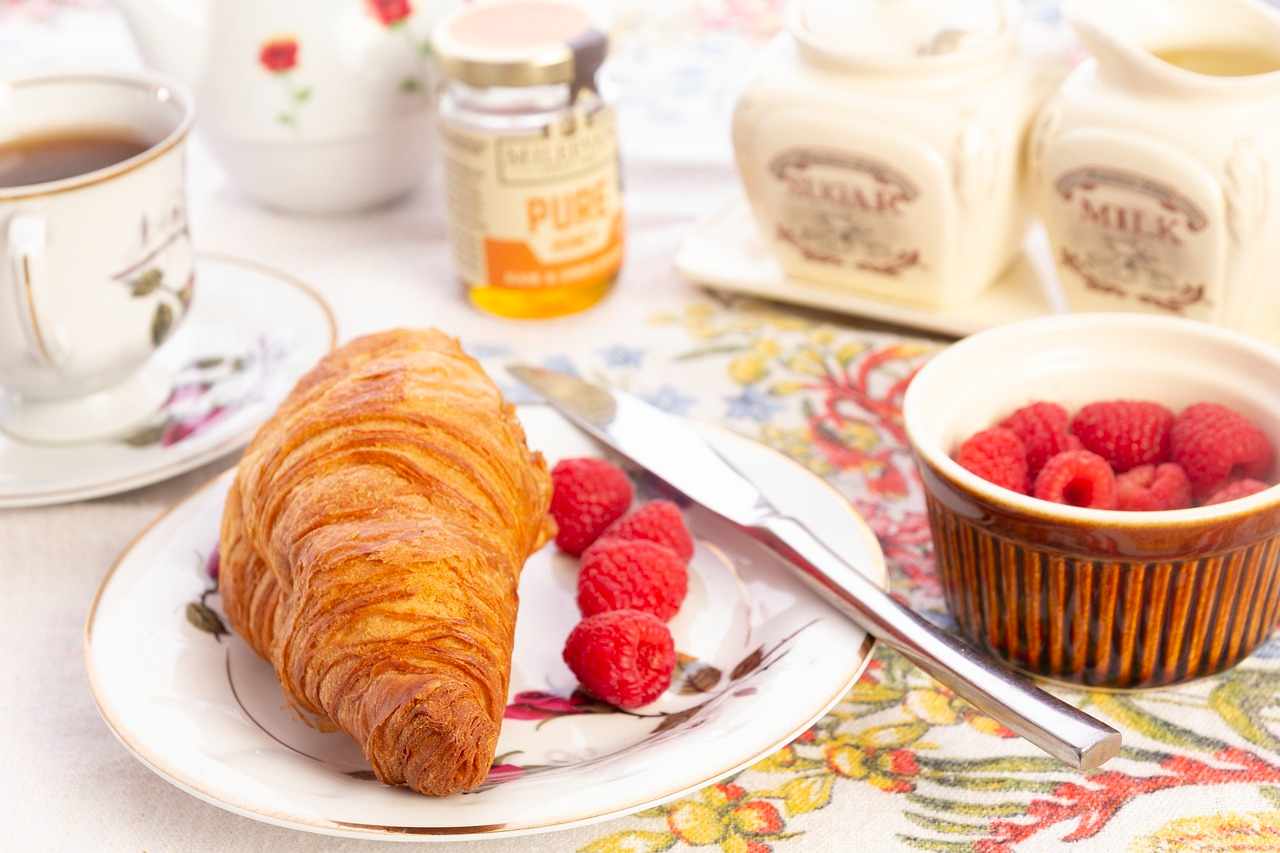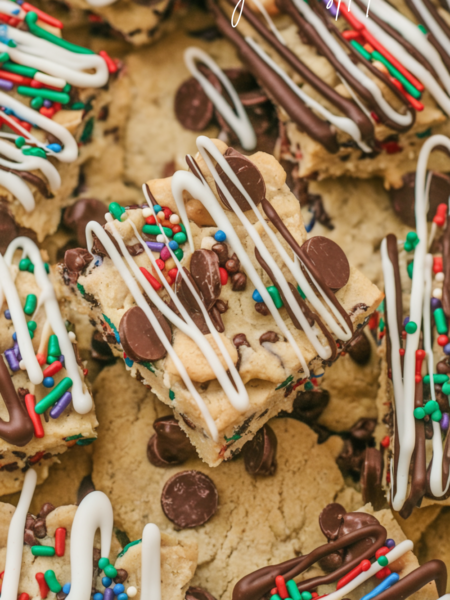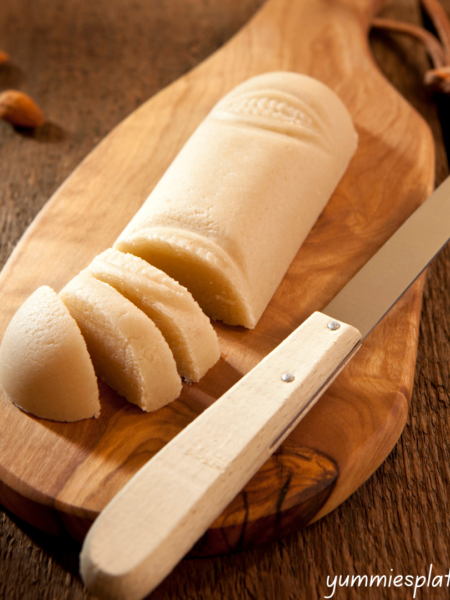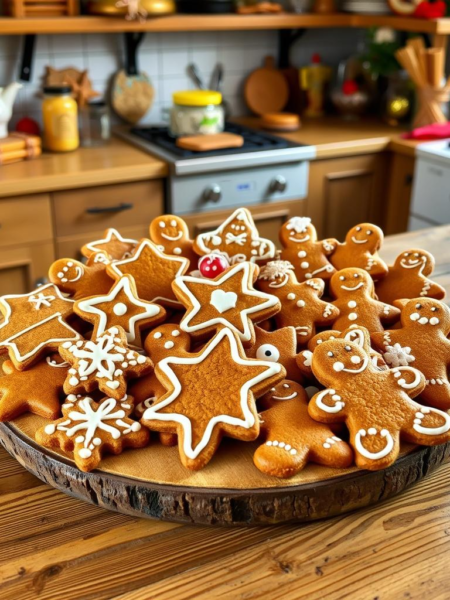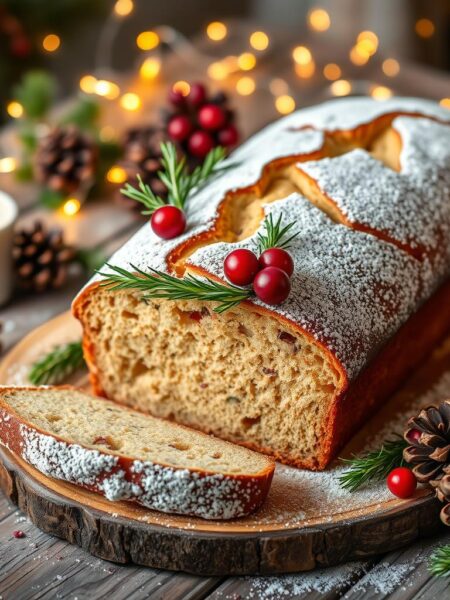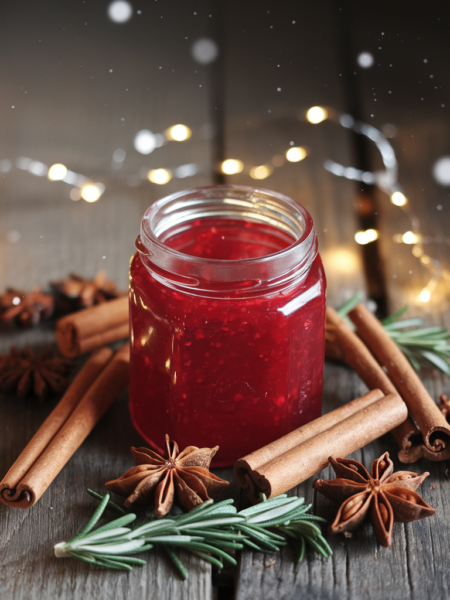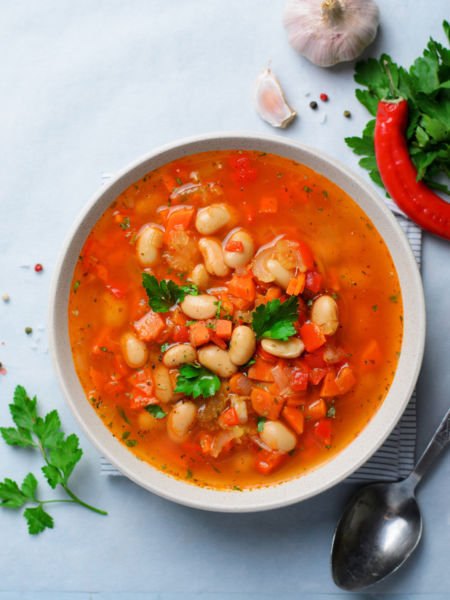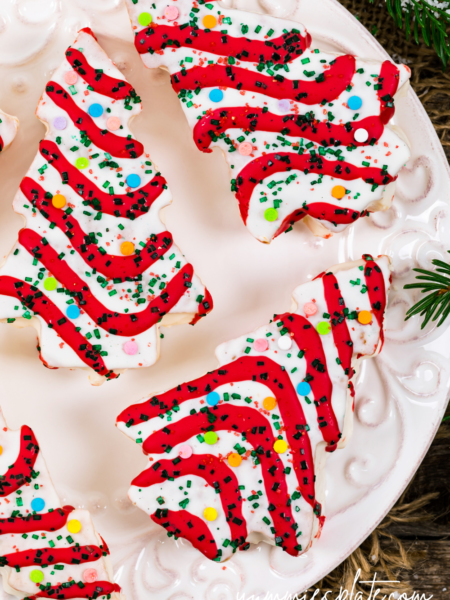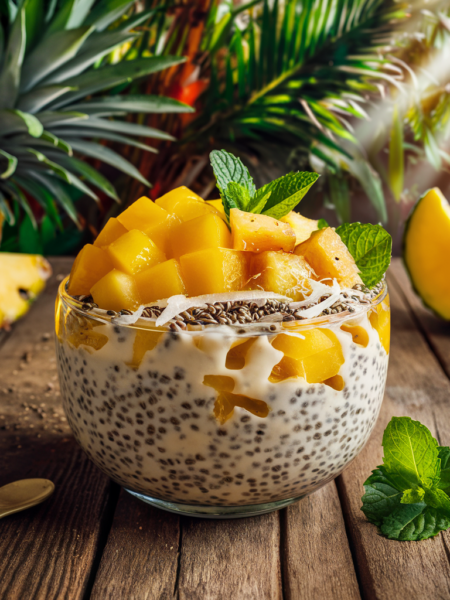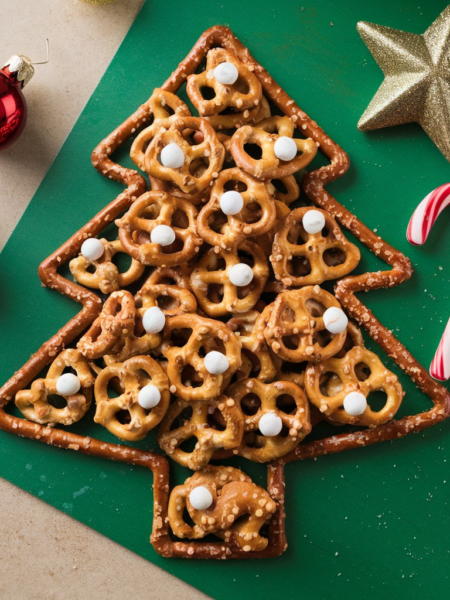Today, I’m thrilled to share my Swiss Gipfeli recipe with you. These pastries are a favorite in Switzerland. They have a crispy crust, flaky layers, and a dense inside. Enjoy them simply or with sweet or savory fillings for a delicious treat.
Understanding Swiss Gipfeli: A Traditional Pastry
The Swiss gipfeli is a beloved pastry in European cuisine. It has a special place in the hearts of locals and visitors. This crescent-shaped pastry is known for its golden crust and unique texture. It’s a key part of the Swiss breakfast tradition.
Origins and Cultural Significance
Gipfeli, or crescent-shaped pastries, have a long history in Switzerland. They date back to the 19th century. Each region and bakery have made its own version, creating many regional flavors. This pastry is deeply rooted in Swiss culture, loved by many for generations.
Difference Between Gipfeli and French Croissants
Gipfeli and French croissants look similar but are different. Gipfeli are less sweet and have a firmer texture. Their dough gives them a butterier flavor.
Traditional Serving Methods
In Switzerland, gipfeli are enjoyed as a light breakfast. They’re often eaten with coffee. They’re also great as a mid-morning snack or for picnics. Their sweetness makes them suitable for both sweet and savory recipes.
| Characteristic | Swiss Gipfeli | French Croissants |
| Shape | Distinct crescent shape | Classic crescent shape |
| Texture | More compact and firmer | Flakier and lighter |
| Sweetness | Less sweet | Sweeter |
| Flavor Profile | Pronounced buttery taste | Richer, more decadent |
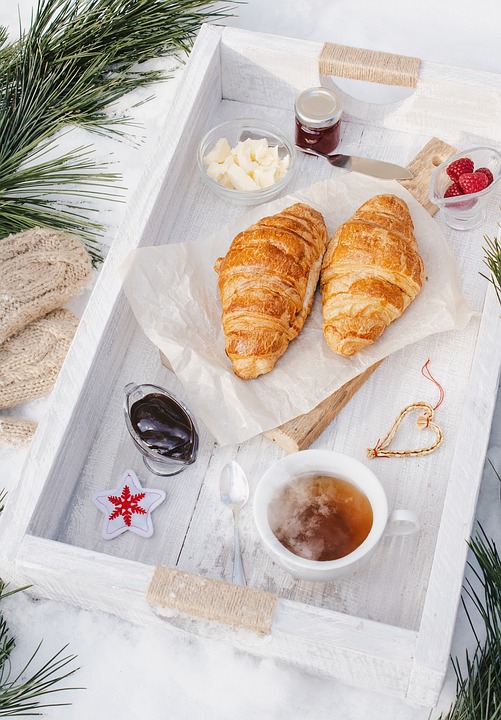
Essential Ingredients for Perfect Gipfeli
Making the quintessential Swiss gipfeli pastries needs a special list of gipfeli ingredients. These ingredients are key to getting the right buttery, flaky texture. At the core of this recipe are a few important baking essentials that mix to make the pastry dough.
You’ll start with 500g of all-purpose flour, which is the dough’s base. Then, 250ml of warm milk adds moisture and richness. 50g of granulated sugar adds a hint of sweetness. A single packet of active dry yeast (7g) makes the gipfeli light and airy.
For the flaky layers, 250g of cold, unsalted butter is crucial. This butter is high in fat, making the gipfeli layers delicate. A teaspoon of salt balances the sweetness and enhances the butter’s flavor.
For a special treat, you can add fillings like chocolate, jam, or cheese. These optional ingredients let you make your gipfeli unique and explore new tastes.
Kitchen Equipment and Tools Needed
To make the perfect Swiss Gipfeli, or buttery croissants, you need some key baking tools and equipment. Let’s explore the must-have items for this rewarding culinary journey.
Essential Baking Tools
The basic equipment for making Gipfeli includes:
- Mixing bowls (various sizes)
- Measuring cups and spoons
- Rolling pin
- Baking sheet
- Parchment paper
- Pastry brush
- Plastic wrap
- Damp cloth
These basic tools help you measure ingredients, mix the dough, roll it out, and prepare the pastries for baking.
Optional Equipment for Advanced Techniques
If you want to try more advanced Gipfeli-making techniques, some extra equipment can be useful:
- Stand mixer with a dough hook attachment
- Food processor
- Bench scraper
- Infrared thermometer
Mastering the Lamination Process
The secret to flaky layers in Swiss Gipfeli or croissants is pastry lamination. This method involves folding and rolling the dough with cold butter. It creates layers of buttery goodness. By learning this process, you can make bakery-quality pastries at home.
Creating Perfect Layers
To start, roll the dough into a big rectangle. Place cold butter on half of it, then fold the other half over. Seal the edges. Roll and fold the dough like a letter, chilling it between folds.
Temperature Control Tips
Keeping the butter cold is key. It should be between 52°F and 61°F. This helps create flaky layers. Also, proof the dough at 75°F to 78°F to help it rise without melting the butter.
Common Lamination Mistakes
- Overworking the dough: This can cause the butter to melt prematurely, resulting in a dense, greasy pastry.
- Letting the butter get too warm: If the butter softens too much, it will blend into the dough instead of forming those crisp, flaky layers.
- Skimping on the butter: The butter should make up nearly half the weight of the dough for the optimal flakiness.
Shaping and Forming Techniques
Making the perfect Swiss Gipfeli is all about shaping and forming. It’s about turning the dough into flaky, crescent-shaped pastries. This process is key to getting the right look and texture.
The dough is first rolled out into a big rectangle. Then, it’s cut into triangles with a 3–4-inch base. This makes the dough ready for the classic crescent shape.
- Start rolling each triangle from the wide base to the tip. This makes a tight, crescent shape.
- Place the shaped Gipfeli on a baking sheet, leaving 1 inch between each one.
- For the perfect shape, roll the dough tightly from base to tip. This detail makes Swiss Gipfeli different from French croissants.
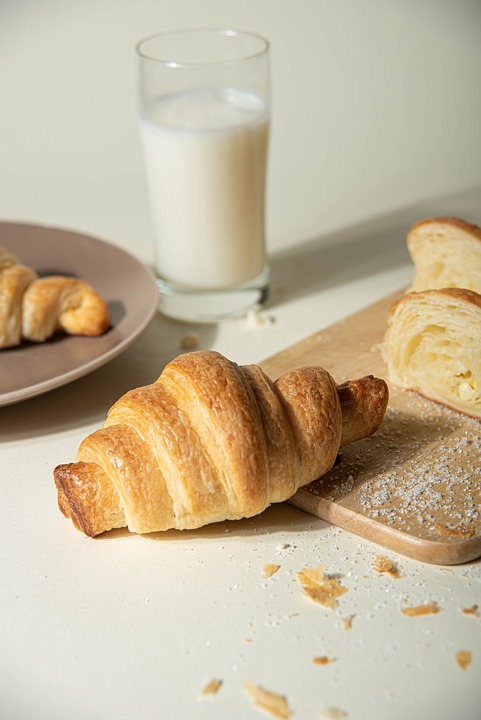
Storage and Reheating Methods
Keeping your homemade Swiss gipfeli fresh and crispy is key for a great taste. Whether you want to eat them right away or save them for later, knowing how to store and reheat them is important.
Storing Gipfeli
For a short time, you can store your gipfeli in an airtight container at room temperature for up to 2 days. This keeps their flaky texture and buttery taste. But you know, for longer storage, freezing is the best.
- Freeze your gipfeli after they cool down. Use a resealable freezer bag or airtight container.
- Sealed well, frozen gipfeli stay fresh for up to 2 months.
Reheating Gipfeli
Ready to enjoy your frozen gipfeli? There are good ways to reheat gipfeli and get them flaky and warm again:
- Oven: Heat your oven to 350°F (175°C). Place the gipfeli on a baking sheet. Warm for 5-7 minutes, until crispy and hot.
- Air Fryer: Set the air fryer to 350°F (175°C). Reheat the gipfeli for 2-3 minutes. Watch closely to avoid burning.
- Stovetop: Warm the gipfeli in a greased skillet or pan over medium heat. Cook for 1-2 minutes per side until golden.
Conclusion
Whether you’re serving these Swiss pastries for a special occasion or as an indulgent weekend breakfast, homemade gipfeli are sure to impress your family and friends. Embrace the art of Swiss baking and let the aroma of freshly baked gipfeli fill your kitchen. It will transport you to the heart of Switzerland.
You may also like it
Little Debbie Christmas Tree Cheesecake Recipe: You Won’t Believe How Easy It Is to Make!
Crockpot Christmas Crack Recipe: The Easiest Holiday Treat You’ll Ever Make!
Christmas Lima Beans Stew Recipe: The BEST You’ll Ever Have!
Christmas Crack Recipe with Pretzels | Easy Holiday Treat
How to Make Swiss Gipfeli Recipe: Buttery Croissants
Description
Swiss Gipfeli, also known as Swiss croissants, is a delightful and buttery treat perfect for breakfast or as a snack. These crescent-shaped pastries are slightly less sweet than their French counterparts, making them ideal for pairing with jams, butter, or even savory fillings. Here's a step-by-step guide to making these golden delights at home!
Ingredients
Instructions
-
Activate the Yeast
In a small basin, combine the heated milk and yeast. Let it sit for 5-10 minutes until frothy.
-
Prepare the Dough
In a large mixing bowl, combine the flour, sugar, and salt. Add the yeast mixture and knead until smooth. Cover and allow rest for 1 hour, or until doubled in size.
-
Incorporate the Butter
Roll out the dough into a rectangle and spread softened butter over two-thirds of the surface. Fold the unbuttered third over the middle and then the remaining buttered third over that, like folding a letter.
-
Roll and Fold
Roll out the dough again into a rectangle and repeat the folding process. Chill the dough for 30 minutes. Repeat this step two more times to create layers.
-
Shape the Gipfeli
Roll out the dough into a thin circle and cut it into 8 triangles. Roll each triangle from the wide end to the point to form a crescent shape.
-
Proof the Pastries
Place the shaped Gipfeli on a baking tray lined with parchment paper. Cover and let them proof for 30-45 minutes.
-
Bake
Preheat your oven to 375°F (190°C). Brush the Gipfeli with beaten egg and bake for 15-20 minutes, or until golden brown.
-
Cool and Serve
Allow the Gipfeli to cool slightly before serving.
- Amount Per Serving
- Calories 220kcal
- % Daily Value *
- Total Fat 10g16%
- Sodium 220mg10%
- Total Carbohydrate 28g10%
- Protein 5g10%
* Percent Daily Values are based on a 2,000 calorie diet. Your daily value may be higher or lower depending on your calorie needs.
Note
Enjoy these gipfeli warm, as a breakfast treat or afternoon snack. They have a rich, buttery flavor and flaky texture.
